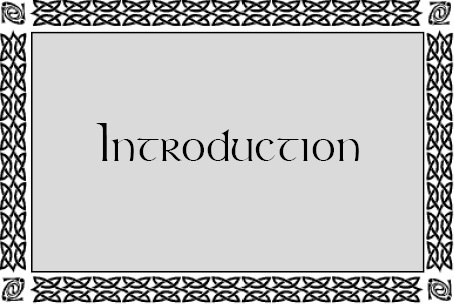
The passing of the great Gaelic lordships and the increasing modernization of the Celtic world did not mean that the storytelling tradition died out. Indeed, it had become far too imbedded in the Celtic psyche to do so. It now largely became the preserve of those who had always owned it: the common people.
Across the centuries, folktales and legends had formed a central and important part of Celtic society. As the great Mythological Tales of old, they recorded events and characters within the communities, but they also served as an explanation for occurrences within a locality. Thus the tales of heroes and kings, of gods and monsters were added tales of ghosts and fairies. These stories were not mere recitations of monarchs and warriors (as under the Bards) but now reflected the perspectives and beliefs of the Celtic people and their descendants. At night, the noises that emerged out of the dark were the sounds of sheehogues, or supernatural creatures that traversed the gloom. Milk that had somehow soured overnight was the result of the intervention of the marbh bheo (the nightwalking dead) or the fairies, whose touch could accomplish this. The fact that cows did not give milk or hens did not lay was put down to the evil of witches in the community. Odd shapes, glimpsed at twilight in the middle of some ancient earthworks were unquestionably the Sidhe (the ancient and secretive people of the mounds). That these may have been ordinary objects distorted by the poor light that the milk curdled for natural reasons that the sounds from the darkness were no more than night creatures going about their nocturnal business did not suffice to explain them away, and so a body of lore and belief began to build up. Certain places in the area were sheehoguey (frequented by supernatural entities); certain precautions had to be taken to avoid unearthly visitations; certain actions had to be carried out in order to placate Otherworldly beings—all these became a part and parcel of later Celtic life. And these beliefs and perceptions were carried across the generations in the tales that were told.
As were the mythological warrior tales before, such stories were mainly oral in their transmission. They were told around the firesides in country cottages and in places where people gathered. And they had a community element as well, for they bound neighbors together in a common consciousness and identity. As with the great Bardic gatherings centuries before, people came together to hear these stories and take them away as part both of themselves and of their culture. The Bards themselves were replaced by traditional local storytellers (in Ireland, these people were known as seanachie, or men—and women—of lore) who could spin a fine yarn concerning histories, events, and places in the local community. Such people were accorded the status that had once been given to the Bards. The tales that they told not only served as entertainment and explanation, they actually shaped and honed who their listeners were and how those people saw themselves. Not only this, but the stories gave shape and meaning to the countryside around them and their relationship to it. The haunted fort at the foot of the field might be haunted or the abode of fairies, but it was haunted for a purpose. There might have once been a mighty battle fought within its earthen walls, or there might have been an awful murder committed there. The resonances of these events and actions percolated down across the centuries and immersed themselves in rural folklore.
As with the warrior tales before them, the tales that were often told around the fireside were oral ones, simply conveyed by word of mouth between relatives or from one neighbor to another. Sadly, unlike the mythological tales, in the majority of cases, no attempt was made to record them. Although a number of anthologies of Celtic folktales have been recorded, many of them vanished into oblivion as the years passed.
This loss has accelerated as the modern era has taken hold. New and “scientific” and “reasoned” explanations have been found for events and phenomena in the Celtic countryside, and our notions of what constitutes “culture” have changed. Much of our cultural entertainment nowadays comes from a box in the corner of our living rooms, much of it is imported, and this has almost dissolved the indigenous ancient cultures of the Celtic past. And yet, there is still a hankering for the perspectives of yesterday; we all still love a good story, well told. Perhaps not all of our Celtic heritage has completely vanished.